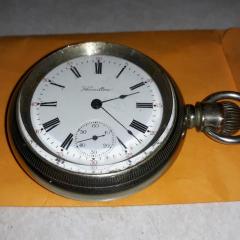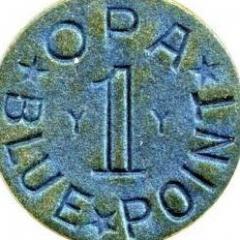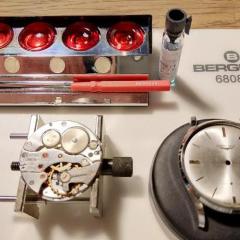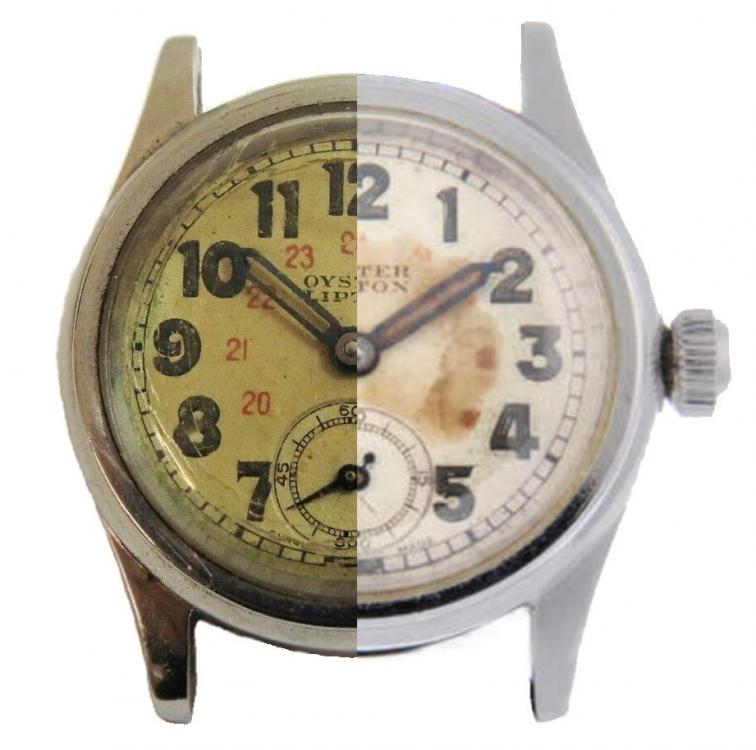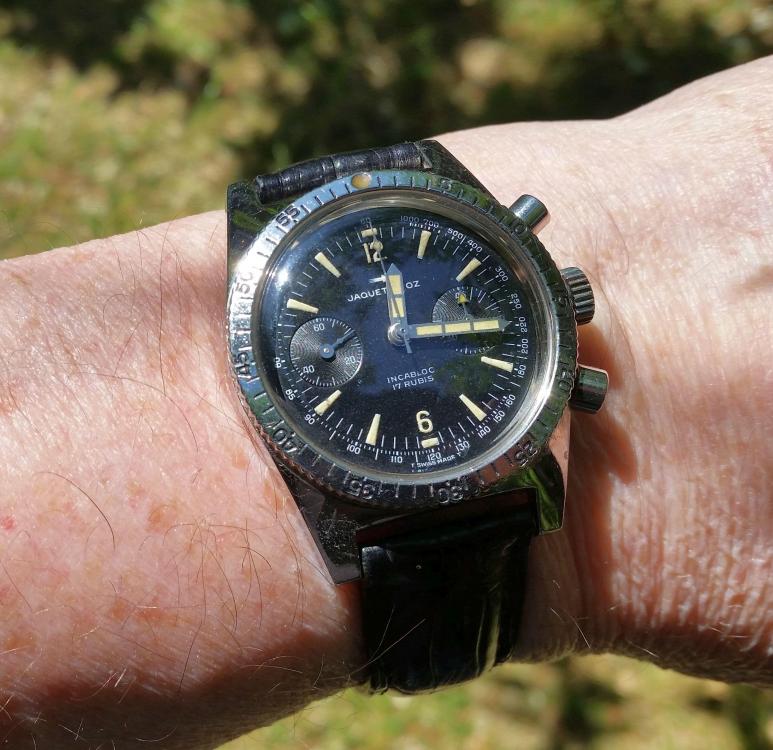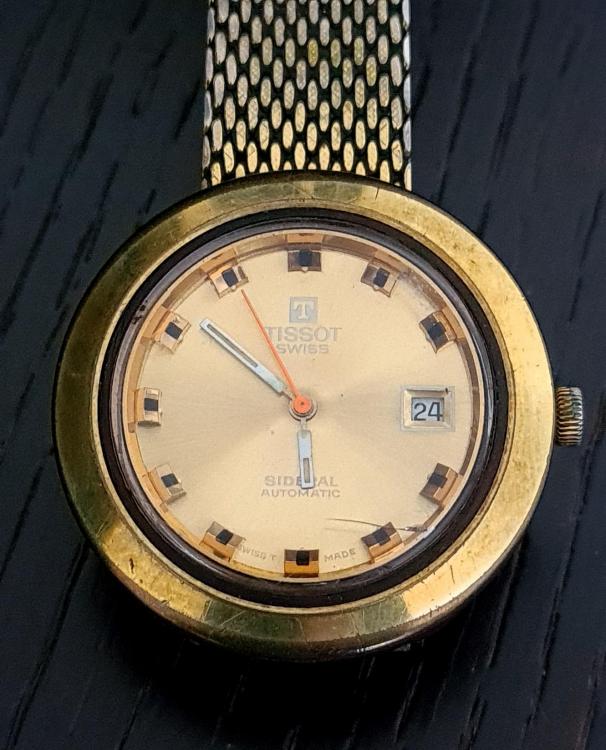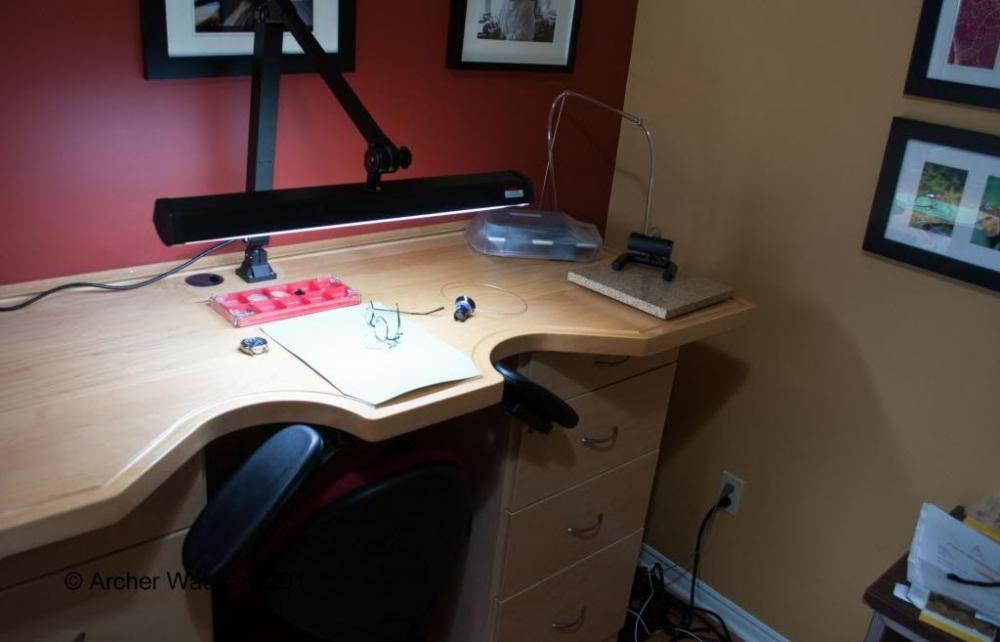Leaderboard
Popular Content
Showing content with the highest reputation on 08/05/20 in all areas
-
It never ceases to amaze me what you can stumble across whilst looking up something else on the web. I was looking for help on replacing the failed hydraulic disc breaks on my 15 year old mountain bike, but instead discovered a gem of a video on how bicycles were made in Britain back in 1945. Enjoy the video if you have nothing better to do for the next 17 minutes and 22 seconds.3 points
-
AFAIK mine cannot be attached to the computer, I think the USB is only to recharge the battery. It accepts a SD target to capture photo and video. Those photos were directly taken with the tools, and this is what the videos look like: (BTW: too much oil in the cap stone and some lint near the balance )2 points
-
These microscopes are not like opticals, but for the price (around 30 € incl p&p) they do great job. As an amateur with a limited budget and limited work space, I'm quite pleased with it and in my opinion yes you can detect small damage. I'm sure you can work better with optical tools, of course.2 points
-
This is one of my first watches. I own it for more than 40 years and I stored it for years after it fell and the crystal snapped. Seven years ago I decided to restore it . I went for two or three watchmakers for an estimate but In the end I decided to do it on my own. Had to Redial/Relume, find a new crystal, gaskets, hands, bezel spring and movement overhaul. Took me a while and finally finished it a few weeks ago. I’m very pleased to wear it again (though I’m not planning to dive with it) The original watch looked like this: There was a lot on my list: There were scratches on the dial and the black lost its depth, The lume was in bad shape (though the lettering was better.) The hands were missing, and I had to find something that resembles the original hands (“Hens teeth”) The Mineral Crystal broke long ago and I had to find crystal and gasket(s) The rotating bezel had to be polished and repainted. The bezel click spring was missing. The crown gasket over the years became black goo and had to be replaced. The crown tube gasket was missing (I didn't know it at this point) The movement was in fair shape, but has to be serviced. As I wrote I decided to do it all by my own after I received several estimates from watchmakers (I guess this was my intention from the beginning but I didn't have the know how nor the confidence.) Took this as a project and had to dig for information. Since there are few versions of this watch I had to find the right info. Some restored a similar but not the same version and I had to dig for the right info. The dial: I sent the dial to Robert Miller at international dial company. He told me he has the original dies for the “professional” sub (The orange sub) for this watch he had to change it to sharkhunter. (this was seven years ago, now I see the company changed its location and website) You can compare the before and after. The Hands As the original hands were lost, and there are no originals to be found.I Found very similar ones at Yobokies. This sub uses Eta 2472 movement (aka doxa 118), which uses the same hand size as seiko. Yobokies (and dagaz) sells seiko mods, one of them is the soxa mod or axos mod which mods the seiko to look like the doxa sub. The ”soxa” hands looks very similar to the sub’s hands. Since they were meant for slightly bigger dial, I had to shorten the seconds hand. I was also happy to see that the lume color on the dial and hand were the same. The crystal and the crystal gaskets. Since the crystal broke years ago I had to find one that fits. I was a little bit confused from what I saw on the net until I realized there are few versions of the sub. In the synchron sub for example (A later version of this watch- from the time synchron company purchased doxa) the crystal is a thick flat mineral glass. It is inserted from the front and held by a thick visible orange gasket. In this version the the crystal is a stepped glass, 3.6mm thick approx, it is inserted from the back of the watch and held by a screw in retainer ring, with no visible gasket. Because it is not manufactured anymore, some watchmakers produces a close clone by bonding two flat crystals in different thickness and size. This guy on the bay produces this crystal by copying an original one(as he said). He posted it as a “DOXA SUB 300T Sharkhunter” crystal unaware of the various possible versions for this title. At the time I wasn't sure it will fit mine, so I made one using the watchmakes method by bonding two crystals to one using ultraviolet curing bond. At the same time I was looking for a fit gasket when I stumbled on a post in this forum . Now You can’t see the original post’s images, but in this image (from the post) I found that the Crystal was held by two (probably the same) gaskets (the gaskets on the center of the image). Ordered some gaskets in various possible sizes and choose what fitted best. The gaskets fits the inside of the watch and around the wider bottom side of the crystal. It is all held by a screw-in retainer ring. (bottom left ring in the image above). Can’t tell if this was the original design, and I didn’t make any pressure test (yet) This is the crystal and gaskets I used: The rotating bezel At the time I didn't notice the bezel has polished and brushed parts, so I polished it all, and colored the marks and numbers using nail polish lacquer. On the luminous dot I used epoxy glue mixed with luminous powder. It was one of the first things I did on the watch and left it as is. The bezel spring Had to create a new bezel spring following this post. I used dentist's 0.8mm stainless steel wire but I wasn't sure what of the exact wire girth, so I ordered from AliExpress various wire sizes. Made this spring. It's not perfect but it's doing the job. The crown gaskets The original crown gasket became black goo long ago. Couldn't find any information regarding this screw down crown. The closest design I found was Rolex twinlock crown . From the shape of the crown and tube I assumed the possible sizes of both case and crown gaskets. I ordered some possible gaskets sizes and used the ones that fitted best. I added even one more gasket around the case tube to imitate the Rolex triplock (obviously unnecessary...) The Movement In this watch doxa used the Doxa 118 movement - a slightly modified eta 2472 movement. The movement had to be serviced. On some point on this long period I decided to service it on my own. It was the most intimidating part of this restoration because I had to learn this from zero. Bought some old movements on the bay for cheap, bought some required tools and started to take them apart and rebuilt them again. After I gained some confidence I did it on the doxa. I made some damage but found the right replacement parts (One of my discoveries was that movement springs tend to fly and disappear while flying…). It took me longer than I thought. For couple of years I left it in the box, but the covid19 period gave me little time to get back to it and finish the job. more to do Need to regulate the watch, probably after I will build a proper timegrapher mic. Maybe pressure test: just to check how waterproof is it. I’m not planning to dive with it. Bor bracelet: maybe yobokies. found this on alibaba but minimum order is 200… Thanx Gabriel (This was also posted on Watchuseek doxa forum few weeks ago)1 point
-
That jewel is cracked. It's hard to see the train layout from your photo, but if the side-thrust pushes the pivot into the crack then it would very possibly reduce amplitude.1 point
-
I reckon the Bergeon ones are probably made by Dumont. You can only develop your own preference by trying them , but these days I mainly alternate between a old pair of 3C and normal pair of 3 for "coarse work". I'd happily use a set of number 4 or 2 instead though. Carbon steel or Dumostar is the way to go in my opinion. The Carbon steel ones are glass-hard.1 point
-
I have cheap tweezers + Dumont never used Bergeon. the difference between the Dumont & cheap is the Dumont once dressed stay dressed for along time.1 point
-
For my needs what I have is working for me. Since this is a hobby, well for most of us we don't want to spend too much on things. I still need to get a micro sd card in order to take picture from my scope and I don't care that I can't hook it up to a computer but that's just me other may want or need this. Here another shot again taken with my hand held camera, the picture is very clear in person if you could see the screen. This is a bent lower Escape wheel pivot.1 point
-
More like a Timex M66 See here for an incomplete list of Timex movements with pictures. -> https://17jewels.info/movements/t/timex/1 point
-
Its this one (the option that it's 36 € now) https://es.aliexpress.com/item/32819282687.html1 point
-
1 point
-
1 point
-
1 point
-
More accurately: for 7S26A and B, and 7S36B, it's either 201.024 or 201.075 That according to the Seiko service sheets from which I compiled the document linked above. With the hope that this will help you resolve the matter, and perhaps return to this topic to its intended subject.1 point
-
I think the most agrees with this and as a collector myself I would prefer a dial with Normal aging, patina and imperfections which appeared by natural causes. But sometimes the imperfections occur when someone just wanted to “clean off” the dial a bit. This often results in a much lighter dial than expected and with print or varnish gone. In this case it will not preserve the price I think. A small example of what I mean with patina and imperfections can be seen to the left. This is just my opinion and I think the most professional restorers are gentle and will preserve the dial in a preferred condition.1 point
-
1 point
-
1 point
-
1 point
-
I just checked my own Hampden and, I was right, no mustache lever. I'm rather glad it doesn't have one now. As poise goes, I think I like the counterbalanced pseudo-English lever that my old Longines uses.1 point
-
Problem solved. I disassembled part 240, the offset canon pinion, and tightened it a little before fitting to wheel 201 with grease. And ensured that the normal canon pinion is running freely.1 point
-
1 point
-
restored dials decrease the value for many vintage watches such as Rolex, Omega and many other top brands. Collectors like to see the age and imperfections that develop over time as these make each watch unique in its own way. Have the movement serviced, and any debris removed from the dials and hands. here is one article that supports this - https://www.wpdiamonds.com/watch-damage-affect-resale-value/#:~:text=Older watches with a patina,the authenticity of the watch.1 point
-
My first watch and still have it today - Tissot Sideral Automatic with fiberglass back. Bought way back in 1971. I believe these were gold plated including bracelet. Possible Model No 821 - 44745 or 112/429 (from original receipt). I wore it as my daily watch and it had a very hard life. Never been serviced and still works fine. Spotted one on ebay for $4561 point
-
Looking at the state of the watch it far gone and due for replacement. Heed the advice given by jdm wise words.1 point
-
the Elgin watch company had a interesting way of liquidating their main factory simplistically the parts spread out across the countryside which means there's lots and lots of new old stock parts. Wikipedia just doesn't quite describe what really happened. so for instance if you do a search for Elgin watch screws you might find a link like this one. http://www.ofrei.com/page1388.html this means if you know what you looking for conceivably the screw assortments will show up on eBay as they should be out there somewhere.1 point
-
Not 100% accurate, at least two of them work. I may have one or two corpses spare part donors, but most of my HMTs do in fact work just fine. OK, maybe they didn't when I purchased them, but with a little TLC, they now work perfectly. You are just jealous that I have the yellow-est non after-market dial HMT ever created.1 point
-
first one I've ever seen in my short time doing this. only other one was in a book somewhere and I'm still searching for it. it is pretty cool though but I can tell you, it makes for an adventure in re-assembly and timing. it bumps into and catches EVERYTHING!1 point
-
A very creditable repair job well executed, Unfortunatley some "professionals" are either unable or unwilling to do the same . Once again brilliant.1 point
-
The light you use also needs to work with the surface you are going to work on. A green surface is very good, you don't want a light that throws out heat, you need something that doesn't give off a shadow but also flexible so you can adjust it. You also need good light in the room. I have strip lighting on the ceiling and around the side of some of the walls. My preference was a green surface and a light like this type. Found this on the internet its not my bench1 point
-
If you tightened what would typically be the canon pinion then it would be normal for the hand not to move. The 'canon' for the minute hand needs to be a free fit on the center post. It's possible the offset canon pinion, part of the offset center wheel (as joe pointed out) is loose, but if it's fighting friction at the center post it would be normal for it to slip or if not, stop the watch.1 point
-
Part No 240 is your offset canon pinion and drives the minute hand. Do not oil 240, grease it.1 point
-
It is a very difficult job to straighten out a hairspring. I would recommend taking all the twists out first. Then I would start bending the round. Once it is flat and round, I would determine where the turn starts and make sure the angle up and then flat is correct and aligned to the stud holder on the balance cock. Then shape it to follow the regulator path. Sent from my iPhone using Tapatalk Pro0 points


